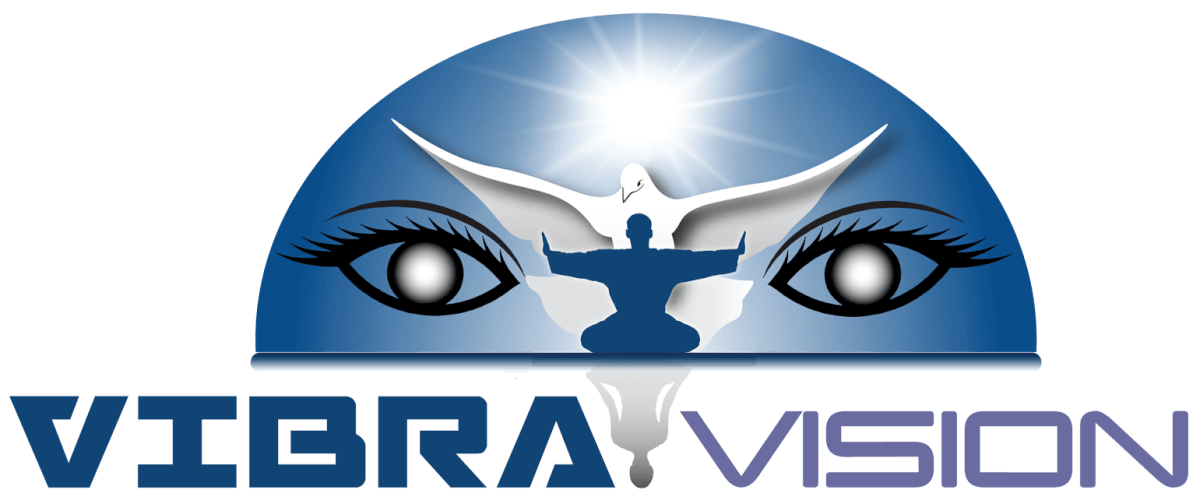Conscious awareness is the state of being aware of and able to think, feel and perceive. It is the ability to be aware of your surroundings and make decisions. It is the ability to be aware of your own thoughts and feelings and to interact with the world around you.
Conscious awareness is thought to be a higher level of functioning than simple awareness. It is believed to be required for certain higher-level cognitive functions such as planning and decision making. It is also thought to be necessary for consciousness itself.
There is some evidence that conscious awareness may be a product of interactions between different areas of the brain. For example, damage to certain areas of the brain can lead to a loss of consciousness. This suggests that consciousness may require the coordinated activity of different brain regions.
Consciousness is a complex phenomenon and scientists are still working to understand all its aspects. However, conscious awareness is an important part of what makes us human and it is something that we all experience every day.
Conscious awareness is the state of being aware of and able to think, feel and see. It is the ability to be aware of your surroundings and make decisions.
Some people believe that we are only conscious when we are awake and that we are not aware when we are asleep. However, there is evidence to suggest that we can be conscious when we are asleep and that some of us may even be aware during unconscious states, such as when we are under anesthesia.
There is still much research to be done in this area, but it is clear that consciousness is a complex phenomenon that scientists are only just beginning to understand.
Conscious awareness is the state of being aware of and able to think, feel and perceive. It is the ability to be aware of your surroundings and make decisions. It is the ability to be aware of your own thoughts and feelings and to interact with the world around you.
The term ‘conscious’ is often used to describe the state of being aware of your surroundings and able to think, feel and perceive. However, it is also used to describe the ability to be aware of your own thoughts and feelings and to interact with the world around you.
Consciousness is an important part of our mental life. It allows us to interact with our environment, make decisions and remember things. It also enables us to have experiences such as pleasure, pain and imagination.
There are many different theories about consciousness, but there is no single definition that covers all aspects of it. Some scientists believe that consciousness arises from the activity of certain brain regions. Others believe that it is a property of the universe as a whole.
Whatever its cause, consciousness is a fascinating subject that is still not fully understood. Scientists are still trying to figure out how it works and what its implications are for our understanding of the mind and the universe.
what is the difference between consciousness and conscious awareness?
Consciousness refers to the state of being aware of and able to think, feel and perceive. It is the ability to be aware of your surroundings and make decisions. It is the part of the brain that controls your thoughts, feelings and behavior.
Conscious awareness, on the other hand, is the process of deliberately paying attention to something in order to gain information about it. It is the ability to focus on a particular stimulus and be aware of it. It is a voluntary process that requires effort and concentration.
So, consciousness is the state of being aware, while conscious awareness is the ability to focus on a particular stimulus and be aware of it.
what is the difference between conscious and awareness?
There is a big difference between conscious and awareness.
Consciousness is being aware of your thoughts, feelings, and surroundings. It’s the ability to think, feel, and perceive.
Awareness, on the other hand, is the ability to focus your attention on something. It’s about being present in the moment and paying attention to what’s happening around you.
For example, you can be aware of the sound of a song without necessarily being conscious of the lyrics. Or you can be aware of the taste of food without necessarily being conscious of the ingredients.
The difference between conscious and awareness is that consciousness is about thoughts and feelings, while awareness is about sensation and perception.
what is a state of conscious awareness?
A state of conscious awareness is a heightened state of awareness in which you are more attuned to your surroundings and your own inner thoughts and feelings. In this state, you may feel more alert and focused, and you may be able to process information more quickly. This can be a useful state for problem-solving or for other tasks that require concentration and focus.
what is an example of conscious awareness?
Conscious awareness refers to the state of being aware of and able to think, feel and perceive. It is the ability to be aware of your surroundings and make decisions. It is the ability to be aware of your own thoughts and feelings and to interact with the world around you.
There are many examples of conscious awareness. For instance, when you are driving, you are constantly aware of your surroundings and making decisions about where to go and how to get there. You are also aware of your own thoughts and feelings, and how they interact with the world around you.
Another example of conscious awareness is when you are talking to someone. You are aware of their body language and facial expressions, and you are aware of your own thoughts and feelings in response to what they are saying. You are also aware of the environment around you, and how it affects the conversation.
Conscious awareness is also necessary for making decisions. For instance, you may be considering whether or not to accept a job offer. In order to make this decision, you must be aware of your own thoughts and feelings, as well as the facts of the situation. You must also be aware of the potential consequences of your decision.
Conscious awareness is an important part of life, and there are many examples of it. It is important to be aware of your own thoughts and feelings, as well as the world around you, in order to make the best decisions and interact with the world in the best way possible.
what are the three levels of awareness in consciousness?
There are three levels of awareness in consciousness: the conscious, subconscious, and superconscious.
The conscious level is the level at which we are aware of our thoughts and actions. This is the level at which we make decisions and take action. The subconscious level is the level at which we are not consciously aware of our thoughts and actions. This is the level at which we store memories, habits, and beliefs. The superconscious level is the level at which we are aware of our thoughts and actions and can consciously control them. This is the level at which we can access our higher self, our spiritual guide, or our Higher Power.
The three levels of consciousness work together to help us create our reality. We are constantly moving between these levels, and our experiences at each level can impact our experience at the other levels. For example, our beliefs and memories stored at the subconscious level can influence our thoughts and actions at the conscious level. Our experiences at the superconscious level can also influence our thoughts and actions at the conscious and subconscious levels.
The three levels of consciousness are always working together to help us create our reality. By understanding how they work, we can learn to use them to our advantage and create the life we want.
how do you create conscious awareness?
There’s no single answer to this question since everyone experiences and learns consciousness differently. However, here are five basic tips to get you started on your journey to becoming more conscious:
- 1. BePresent
The first step to increasing your conscious awareness is to simply be present. You can’t be aware of something if you’re not paying attention to it. So, the next time you’re in a meeting, listening to a lecture, or even just having a conversation with someone, make a point to really focus on what’s being said. Don’t let your mind wander. If you find yourself getting lost in thought, try to bring your attention back to the present moment. -
2. Notice Your Surroundings
Another way to increase your conscious awareness is to take the time to notice your surroundings. When you’re walking down the street, for example, try to really see the buildings, the people, and the cars around you. Don’t just look at them, but really see them. Pay attention to the colors, the shapes, and the textures. If you can, try to imagine what it would be like to be one of those objects. What does the wind feel like as it blows past a building? What does the pavement feel like under your feet? When you really take the time to notice your surroundings, you’ll be surprised at how much more you see and learn about the world around you. -
3. Pay Attention to Your Thoughts
Your thoughts are another great way to become more conscious. After all, how can you be aware of something if you’re not even aware of your own thoughts? The next time you find yourself thinking, pay attention to the content of your thoughts. Are they positive or negative? Are they helpful or harmful? If you notice that you’re thinking negative thoughts, try to reframe them in a more positive light. For example, instead of thinking “I’m such a failure,” try thinking “I’m doing my best.” -
4. Be mindful of your emotions
Your emotions are yet another tool you can use to increase your conscious awareness. The next time you’re feeling an emotion, take a moment to really focus on it. What does it feel like? What’s causing it? What can you do to change it?When you’re more aware of your emotions, you’ll be better equipped to deal with them in a healthy way. -
5. Get in touch with your body
Your body is yet another way to increase your conscious awareness. The next time you’re feeling physically uncomfortable, take a moment to focus on the sensation. What does it feel like? Where is it coming from? What can you do to make it go away? When you’re more aware of your body, you’ll be better able to take care of it.
There are many other ways to increase your conscious awareness, but these five tips should get you started. Remember, the key is to be present, to notice your thoughts and emotions, and to get in touch with your body. With time and practice, you’ll find that you’re able to be more aware of your surroundings, your thoughts, and your emotions. And, as you become more aware, you’ll find that you’re able to live a more fulfilling and joyful life.
I’m writing this blog article to give some tips on how to properly use headline tags. These tags are important for two main reasons: they help structure your article, and they also help improve your SEO.
When it comes to structure, headline tags help break up your content into manageable pieces. This makes it easier for readers to skim through your article and pick out the parts that are most relevant to them.
Headline tags also give your article a boost in the search engine rankings. This is because search engines look at the tags when they are trying to determine what your article is about. By including relevant keywords in your headline tags, you can help ensure that your article comes up in search results for those keywords.
So, what are the proper uses for headline tags? Here are a few tips:
– Use
tags for your article’s title and subheadings. This will help give your article a clear structure and make it easy for readers to find the information they’re looking for.
– When creating subheadings, try to use keywords that are relevant to your article’s topic. This will help improve your article’s SEO and make it more likely to come up in search results.
– Don’t stuff your headline tags with keywords. This will not only make your article look spammy, but it will also hurt your SEO. Instead, focus on making your headline tags informative and RELEVANT to your article’s content.
By following these tips, you can help ensure that your article is well-structured and easy to read, while also improving your article’s SEO.



